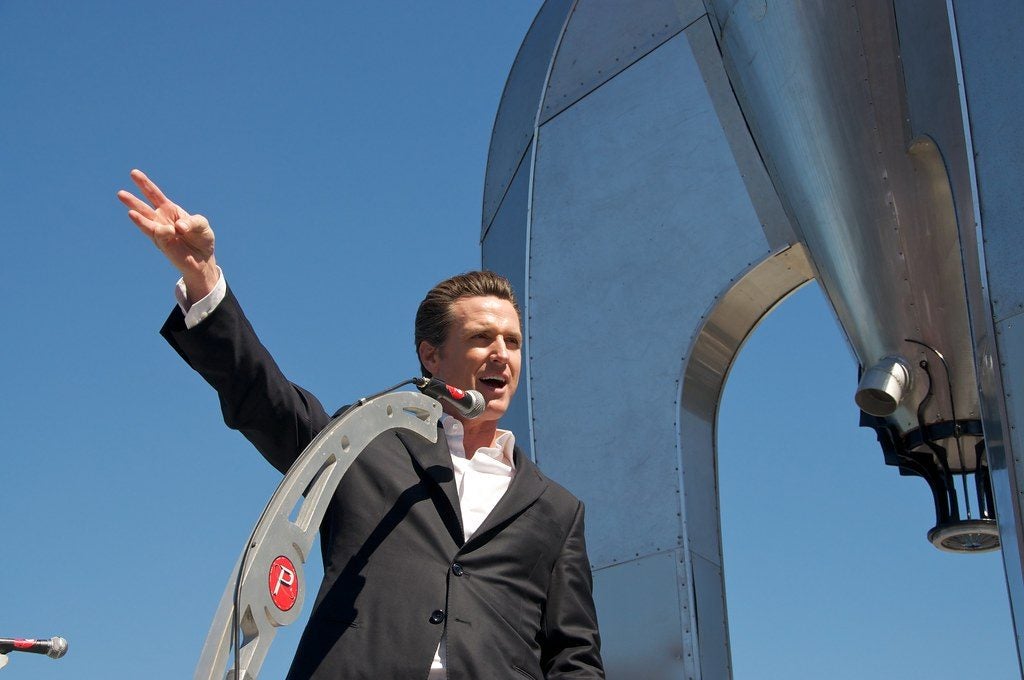In pulling the plug on the twin Delta tunnels and scaling back California’s high-speed rail line, Gov. Newsom broke from his predecessor, who fiercely defended the projects as part of his climate agenda.
But that doesn’t mean Newsom can’t build on Jerry Brown’s strong climate legacy. He can, all while charting a different legacy for himself.
While it may be unfair to reduce Brown’s climate achievements to a few bullet points, two themes often appeared in his initiatives: prioritizing policies to slash greenhouse gas emissions, and capitalizing on the state’s ability to impose mandates.
In essence, Brown did everything he could to decarbonize the economy. That is a towering achievement and Newsom has vowed to defend it.
However, mitigating emissions is only half the equation. If Newsom stopped there, he’d put Californians at high risk of unprecedented loss from the climate change impacts we can’t avoid.

Photo Credit: Steve Rhodes
The governor has the chance to make sure that, even as we experience a changing climate, the quality of people’s lives can actually improve. Likewise, the natural systems that support Californians can continue to be vibrant.
The key to achieving this outcome is building resilience.
The scientist’s concept of resilience is not of a rubber ball bouncing back to the way things were. It’s a recognition that, because of pressures like climate change and population growth, the future will not be just like the past. But with care, we can bounce forward.
This certainly was on Brown’s mind when he pushed for the twin tunnels and the bullet train. But his administration may have relied too heavily on a top-down approach, which divided people into rigid camps, e.g. farmers against environmentalists, north versus south.
Collaboration is a tough sell in today’s polarized world, but it’s imperative for building resilience and it can be achieved. It begins by giving everyone the opportunity to see a better future for themselves and their families. Gov. Newsom has the chance to make sure that, even as we experience a changing climate, the quality of people’s lives can actually improve. Share on X
A great example of resilience in motion can be seen in coastal Louisiana, which is losing a football field of land every 100 minutes due to human-induced erosion and rising seas.
Not all of Louisiana can be “saved.” Some of it will inevitably sink into the Gulf of Mexico. But by considering the science and trade-offs and involving affected communities, this largely red state produced a 50-year plan for a sustainable coast, a plan that includes infrastructure projects as well as a focus on flood risk and resilience. Three iterative versions of that plan have passed the state legislature unanimously since 2007, under Republican and Democratic administrations.
The resilience framing did three things. It created an on-ramp for citizens, officials and business leaders to engage in a sustained dialog about a different future. It gave people something to be “for” in the face of appalling land loss. And it has helped to build the political will to say “no” to special interests who want to redirect restoration money.
Leaning in on mitigation plus resilience is no silver bullet. It’s a complex endeavor seeking to catalyze big shifts in norms, policies and our economy. It’s also imperative for prosperity in a changing world.
As the Newsom administration reconsiders the bullet train and a streamlined water delivery system, he should give people something to be for rather than something to be against.
Because when everyone can see their future in these projects, they will be less subject to reversals by subsequent administrations. That can be Newsom’s legacy.









